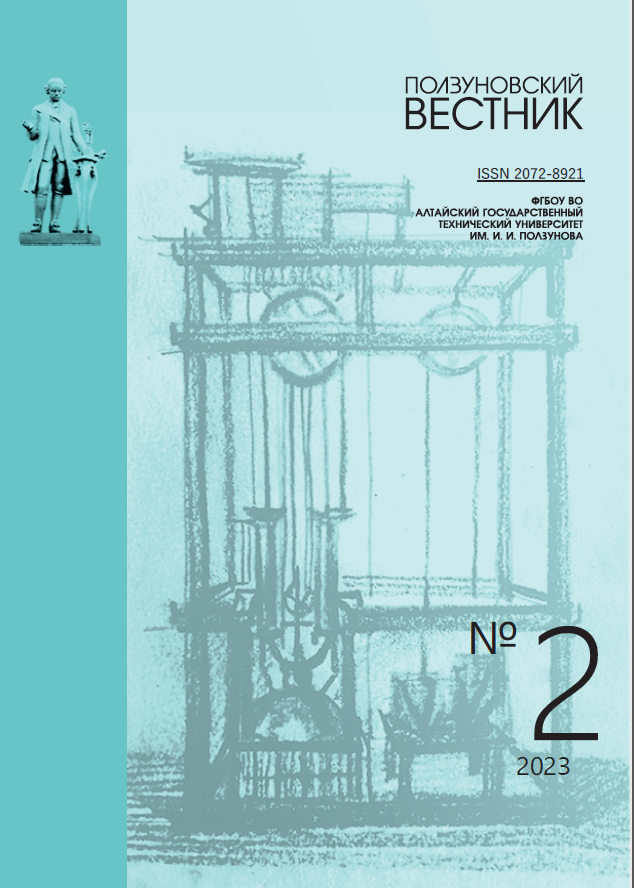DIGITAL EXPRESS ANALYSIS OF BUCKWHEAT GRAIN FRACTIONAL COMPOSITION AS A STAGE OF INDUSTRY 4.0 INTRODUCTION AT GRAIN PROCESSING ENTERPRISES
SFODRL
DOI:
https://doi.org/10.25712/ASTU.2072-8921.2023.02.006Keywords:
buckwheat fractionation, metal-piercing sieves, sieve analysis, express analysis, software, image anal-ysis, digitalization, granulometric compositionAbstract
The modern level of digitalization in the grain storage and processing industry is represented by neural network methods (separation of grain mass and impurities by color), computer vision algorithms (determination of grain vitreousness), methods of grain separation by optical properties (photosorting using high-speed scanning of grain mass and subsequent image processing according to a given algorithm – color characteristics, shape, geometric dimensions). Buckwheat grain is characterized by a large variability in size, which requires its separation into fractions by size before being sent for peeling, therefore, an important aspect of increasing the efficiency of buckwheat fractionation is the possibility of digitalizing the definitions of grain granulometric composition. The objects of research in the work were samples of buckwheat grain from 6 districts of the Altai Territory. The analysis of the fractional composition of buckwheat samples was carried out according to the "Rules of organization and management of the technological process at grain enterprises" in the program "Granulometry" and "Histograms" developed at the Department "Technology of grain storage and Processing" AltSTU. This method of determining the granulometric composition of buckwheat grain, allows you to obtain a quantitative assessment of particle sizes, use information technology in production, thereby reducing the complexity of analysis, besides digital systems have an exceptional ability to promptly correct the results and correct errors. Comparison of the results of buckwheat grain fractionation by the sieve method and using the "Granulometry" program showed high convergence of the data obtained. The average processing time of one sample by the proposed method is reduced by 3-4 times. The results of the study confirm the effectiveness of the "Granulometry" program for express analysis of the fractional composition of buckwheat grain, selection of sieves and preparation of batches of buckwheat for processing.
References
Klepacka J., Najda A., Klimek K. Effect of Buck-wheat Groats Processing on the Content and Bioacces-sibility of Selected Minerals // Foods. 2020. № 9, doi: 10.3390/foods9060832.
Sofi S.A., Naseer A., Farooq A., Rafiq S., Zargar S.M., Kamran F., Ali Dar T., Mir S.A., Dar B.N., Khaneghah A.M. Nutritional and bioactive characteristics of buck-wheat, and its potential for developing gluten‐free products: An updated overview // Food Science & Nutri-tion. 2022. doi:10.1002/fsn3.3166.
Yushchenko N., Kuzmyk U., Kochubei-Lytvynenko O., Yatsenko O., Belemets T. Prospects of using Non-Fried buckwheatgroats in first dishes tech-nology // EUREKA: Life Sciences. 2020. № 6. P. 58–65, doi: 10.21303/25045695.2020.001542.
Важов В.М., Козил В.Н., Бахтин Р.Ф., Яськов М.И. Региональный аспект возделывания гречихи на Алтае // Успехи современного естествознания. 2018. № 8. С. 40–45.
Правила организации и ведения технологического процесса на крупяных предприятиях. М. : ВНПО «ЗЕРНОПРОДУКТ», 1991. Часть 1. 74 с.
Чеботарев О.Н., Шаззо А.Ю., Бахмет М.П., Палагин Н.В., Голубева О.А., Рыбачук А.В. Определение геометрических размеров зерна гречихи // Известия ВУЗов. Пищевая технология. 2005. № 5–6. С. 17–18.
Федотов В.А., Курносова А.Г., Воякина К.В., Овчинникова М.С. Современные методы проведения гранулометрического анализа зернопродуктов // Евразийский Союз Ученых. 2014. № 7. С. 38–40.
Barker D.A., Vouri T.A., Myers D.G. The use of slice and aspect ratio parameters for the discrimination of Australian wheat varieties // Plant Varieties and Seeds. 1992. № 5(1). P. 47–52.
Крыловецкий А.А., Суходолов Д.М. Распознавание изображений элементов зерновых смесей методами глубокого обучения с использованием библиотек KERAS И TENSORFLOW // Вестник ВГУ. Cерия: Системный анализ и информационные технологии. 2018. № 2. С. 139–148.
Majumdar S., Jayas D.S. Classification of cere-al grains using machine vision. I. Morphology models // Transactions of the ASAE. 2000. № 43(6). P. 1669–1675.
Paliwal J., Visen N.S., Jayas D.S., White N.D.G. Cereal grain and dockage identification using machine vision // Biosystems Engineering. 2003. № 85 (1). P. 51–57.
Лузев В.С., Кладов Е.А. Гранулометрический состав промежуточных продуктов размола зерна // Хлебопродукты. 2006. № 11. С. 48–49.
Кладов Е.А., Есин С.Б., Егорова Е.Ю. Компьютерная обработка изображений и их интерпретация в анализе гранулометрического состава масличной муки // Ползуновский вестник. 2022. № 4–1. С. 48–56, doi: 10.25712/ASTU.2072-8921.2022.04.006.
Downloads
Published
How to Cite
Issue
Section
License
Copyright (c) 2023 Stanislav B. Yesin, Evgeniy A. Kladov

This work is licensed under a Creative Commons Attribution 4.0 International License.
















 .
. This work is licensed under a
This work is licensed under a 
